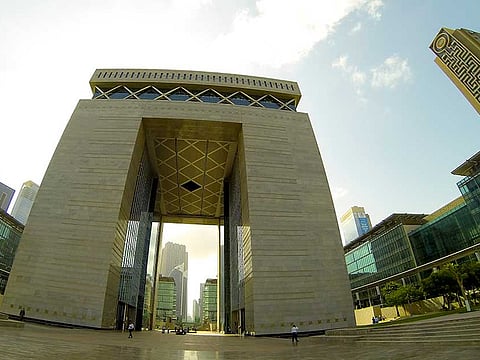UAE banks poised for strong H2 performance
Dubai lenders to lead balance sheet growth and a decline in costs

Dubai: Financial results of UAE banks in the second quarter of this year point to improving profitability, modest balance sheet growth, margin expansion and improving costs, according to banking sector analysts.
While the underlying trend of a turnaround in growth and profitability is in its early stages, analysts say these are sustainable.
“The UAE banks generally reported good second-quarter results, driven by improving credit environment and some margin expansion, with Dubai banks showing relatively better balance-sheet growth than Abu Dhabi banks. We expect earnings to further improve in the second half of 2017 supported by increased credit appetite, [a] consistent decline in credit costs and [a] June rate hike,” Jaap Meijer, head of Equity Research at Arqaam Capital.
UAE banks in general have reported resilient earnings in the second quarter. Earnings benefited from an improvement in credit cost, as well as modest loan growth. Margins were slightly compressed year-on-year, but have improved since the start of this year, thanks to two rate hikes in 2017. Banks continue to put a lid on cost growth, further supporting profitability.
Meanwhile, asset quality was better than a year ago and somewhat stable sequentially as the macro-environment continues to improve in the UAE. The majority of banks reported modest earnings growth year over year.
Margins of the top UAE lenders improved in the second quarter of 2017 on the back of an increase in yields on credit and the loans-to-deposit ratio reversing previous trends, according to an analysis by global professional services firm Alvarez & Marsal (A & M).
Data shows seven of the top UAE 10 banks improved their net interest margins (NIM), while one remained stable. The NIM of these UAE banks increased from 2.45 per cent in the first quarter of 2017 to 2.52 per cent.
While overall profitability has decreased slightly due to lower non-interest income and leverage, net interest margins have increased. Moreover, the cost-to-income ratio (C/I) has decreased, and the risk profile is broadly healthy.
“The banking sector’s overall performance during the most recent quarter has been modest, with profitability and returns on equity showing a small decline. However, this has been partially offset by a rise in net interest margin and banks have also been very sensible in managing their costs, with an improvement in cost-to-income ratio,” said Dr Saeeda Jaffar, a managing director of Alvarez & Marsal.
Analysts say improvements in country’s macro-environment is helping liquidity conditions, credit quality and lending appetite. “Specifically, SME stress is past us now and banks are gradually returning to growth mode after de-risking phase last year. Hence, we expect the second half of this year to be better than the first half, driven by further slight improvement in loan loss charges and asset re-pricing,” said Meijer.
A recent analysis of second quarter data by Alvarez & Marsal of top 10 UAE banks showed that seven of these grew their loans and advanced market share while six banks grew their deposits market share. Operating income growth decreased due to a drop in non-interest income; eight of the top 10 banks grew non-interest income.
Further improvements in efficiency were visible with the cost-to-income ratio decreasing further from 33.1 per cent to 32.8 per cent, continuing a previous quarter trend. Six of the top 10 banks reduced their C/I compared to the first quarter.
Risk metrics showed mixed performance with declines in both coverage ratio and cost of risk. The decrease in cost of risk was driven by a decrease in provisioning rather than an increase in the loans portfolio.
In the overall picture, analysts say Dubai banks are poised for better growth momentum.
“We observe [a] better growth trend among Dubai banks than their Abu Dhabi counterparts in the first half of 2017, supported by [a] relatively resilient property market, [a] diversified economy and [the] Expo 2020, boosting real estate and government borrowing,” said Meijer.
Sign up for the Daily Briefing
Get the latest news and updates straight to your inbox



